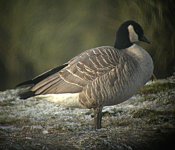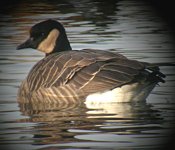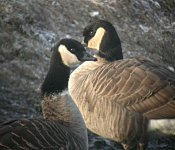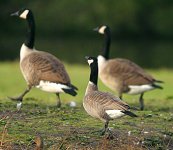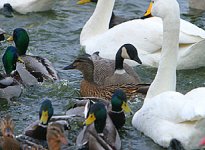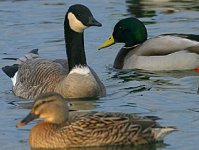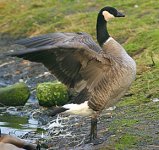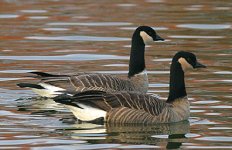Binocularface
You've all got one...............!
Hi
I visited Caerlaverock WWT reserve in Dumfries and Galloway today to have a look at the small race Canada Geese that have been present over the past week or so.
One of the birds seem to be ok for Richardson's Canada Goose, the other bird is very similar in size, general structure and over all colouration but it seems to have a much squarer head shape. Is this within the variation for Richardson's or is it something different?
I have attached some images of both birds below. For more images of these birds click the following link:
http://www.solwaybirder.org.uk/RCG.html
Hope someone can help!
Regards
Tristan
I visited Caerlaverock WWT reserve in Dumfries and Galloway today to have a look at the small race Canada Geese that have been present over the past week or so.
One of the birds seem to be ok for Richardson's Canada Goose, the other bird is very similar in size, general structure and over all colouration but it seems to have a much squarer head shape. Is this within the variation for Richardson's or is it something different?
I have attached some images of both birds below. For more images of these birds click the following link:
http://www.solwaybirder.org.uk/RCG.html
Hope someone can help!
Regards
Tristan




